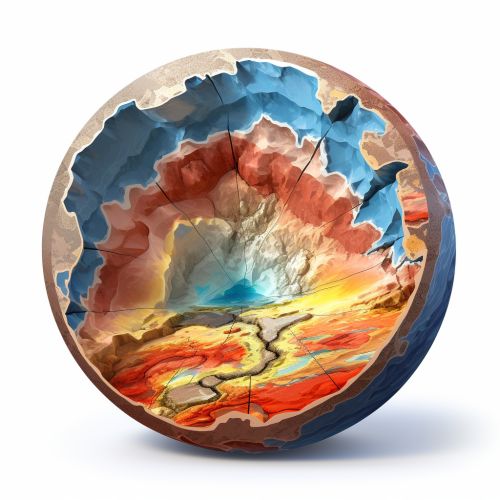Geodynamics
Introduction
Geodynamics is a subfield of geophysics that explores the internal mechanisms of the Earth's movement such as plate tectonics, earthquakes, and mantle convection. It applies the principles of physics to understand the complex interactions of the Earth's mantle, crust, and core.


History of Geodynamics
The study of geodynamics began in the late 19th century with the development of the theory of isostasy. This theory, proposed by John Henry Pratt and George Biddell Airy, suggested that the Earth's crust floats on a fluid mantle, much like an iceberg floats on water. This was a revolutionary idea at the time and laid the groundwork for the development of plate tectonics theory in the mid-20th century.
Plate Tectonics
Plate tectonics is the theory that the Earth's lithosphere is divided into several large and small plates that move relative to one another. These movements can result in the formation of mountains, earthquakes, and volcanic activity. The theory of plate tectonics is central to geodynamics as it provides a comprehensive explanation for a wide range of geological phenomena.
Mantle Convection
Convection in the Earth's mantle is a key process in geodynamics. It is the slow creeping motion of Earth's rocky mantle caused by convection currents carrying heat from the interior of the Earth to the surface. The Earth's heat comes from the decay of radioactive isotopes and residual heat from the planet's formation. This heat causes the material in the mantle to expand, become less dense, and rise to the surface. When it cools, it contracts, becomes denser, and sinks back down. This cycle of rising and sinking creates convection currents that drive the movement of tectonic plates.
Earthquakes and Seismic Waves
Earthquakes are a result of the sudden release of energy in the Earth's crust that creates seismic waves. These seismic waves can provide valuable information about the Earth's internal structure. By studying the way these waves propagate through the Earth, geodynamicists can make inferences about the properties of the Earth's interior.
Geodynamical Simulation
Geodynamical simulation is a method used to understand the dynamic behavior of the Earth's interior. These simulations use mathematical models and high-performance computing to simulate the physical processes occurring within the Earth. They can provide insights into the mechanisms driving plate tectonics, mantle convection, and other geodynamic processes.
Future of Geodynamics
The future of geodynamics lies in the integration of different types of data and the development of more sophisticated models. With advances in technology and computing power, geodynamicists can now create more accurate and detailed models of the Earth's interior. These models can help us understand the complex interactions between different parts of the Earth's system and predict future geodynamic events.
